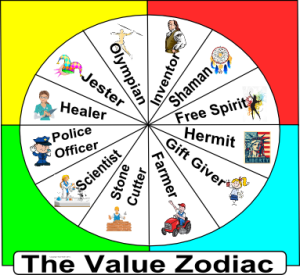 I have observed that far too many people do not identify with people they disagree with. Conflict is healthy. It is the genesis of growth and innovation, but it is the dehumanization of the opponent that is most damaging to constructive dialogue. It is my hope that by highlighting the diversity of human values that each of us carries into our disagreements. Although I have no illusions that these fundamental disagreements will be resolved, it would be of great help for adversaries across debates become more humanized in the minds of their opponents.
I have observed that far too many people do not identify with people they disagree with. Conflict is healthy. It is the genesis of growth and innovation, but it is the dehumanization of the opponent that is most damaging to constructive dialogue. It is my hope that by highlighting the diversity of human values that each of us carries into our disagreements. Although I have no illusions that these fundamental disagreements will be resolved, it would be of great help for adversaries across debates become more humanized in the minds of their opponents.
Our values are visceral. Even when they are grounded intellectually, (and they often aren’t) the fact that they undergird so much of our lives, we will have a deep seated emotional reaction to anything that would move us to reconsider our perspective. We react in fear because the ramifications of having to re-define our assumptions and how we see ourselves in the world is a tremendously traumatic experience. We react harshly and often aggressively toward anything that would threaten our worldview. In particular, a new perspective which would have adverse impact upon your personal relationships is terribly difficult to adopt. So many of our social groups are defined by certain commonly held beliefs that if we were ever to depart from, one is likely to face social ostracism from close friends, colleagues, and sometimes family members. That cost is too great for many individuals. For that reason, ideas that threaten one’s perspective are often seen as an existential threat to the individual.
Fundamentally, the Value Zodiac explores how people are different. It explores fundamentally why it is that people disagree. And when I say disagreement, I mean deep, durable disagreement. There are a number of excellent conflict resolution tools out there that seek to help parties better communicate. The increased communication helps to clear up misperceptions, miscommunications, and build trust. Any competent communicator and influencer should learn to develop these tools. But the purpose of the tool about to be introduced is to explore something new. It is to gain new understanding about those conflicts that are more difficult to solve than with a conversation. We seek to understand why people reach an impasse. These are the conversations that end with the words, “We’ll agree to disagree.”
I became fascinated with the phrase we’ll agree to disagree. Our world seems to be filled with impasses. When I decided to look at this more, I had concluded the rate at which good people reach irresolvable conflicts has increased. I became curious as to why that was. Perhaps, I thought, that these impasses were based on the deepest held notions that we hold in our hearts. I suspected that our individual values, born in early childhood, informed by our background and upbringing, and tempered through the power of our life’s experiences may be the source of these impasses.
I began to think about values. Sitting down in front of my computer, I began to compile a list of basic human values. Eventually that list turn into 312 distinct terms representing human values. I began to consolidate that list into various overarching themes. Eventually, I settled on twelve, each representing a different aspect of the human condition. I then began to think of a simple profession that seemed to typify the traits of that category. These simple professions consist of archetypes — a sort of conceptual shorthand to allow us to discuss these concepts in the larger context of human interaction.
 And as I thought more, I realized that each archetype appeared to be balanced by another archetype which seemed to represent an opposing set of value traits. What I came to understand was that every set of values is balanced by an equally powerful set of values. I named the opposing archetype The Nemesis. I had my first clue to what I would find to be the basis of impasse.
And as I thought more, I realized that each archetype appeared to be balanced by another archetype which seemed to represent an opposing set of value traits. What I came to understand was that every set of values is balanced by an equally powerful set of values. I named the opposing archetype The Nemesis. I had my first clue to what I would find to be the basis of impasse.
All individuals have portions of each archetype in their value framework, but each individual is informed by each archetype in varying degrees. This provides hope that there is always a chance for common ground, but it is when one’s dominant Archetype meets its nemesis in another that real durable conflict develops.
The twelve archetypes were now arranged in six pairs. And the archetypes were arranged into a circular model. What emerged was a new zodiac — the zodiac of human value. The Value Zodiac appears to be a powerful construct in helping to explain a number of concepts, including human conflict. We will discuss the model’s applications as they pertain to influence later. But it was clear to me that I had stumbled onto an insightful idea. I then set myself the task of trying to test the new model.
A PDF summary of the Twelve Archetypes of Human Value is provided here.
A large drawing of the Value Zodiac is provided here.
The Wolff Values Questionnaire was developed to test the Value Zodiac. This simple 24-question, forced choice assessment is simple, fast, and easy to administer. For more information on the Wolff Values Questionnaire and the Value Zodiac, please contact us.
